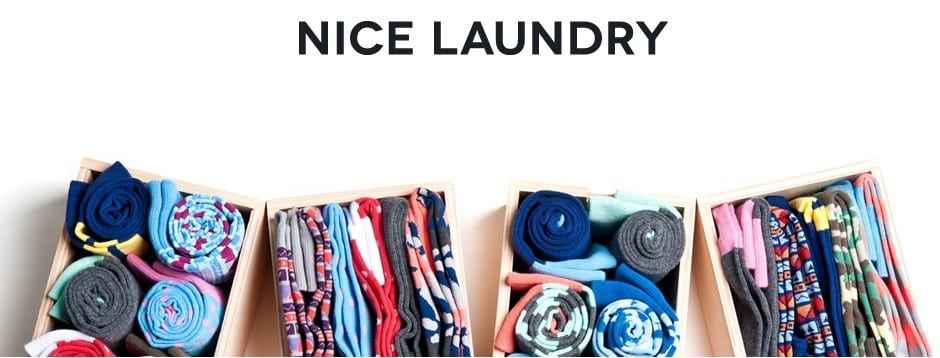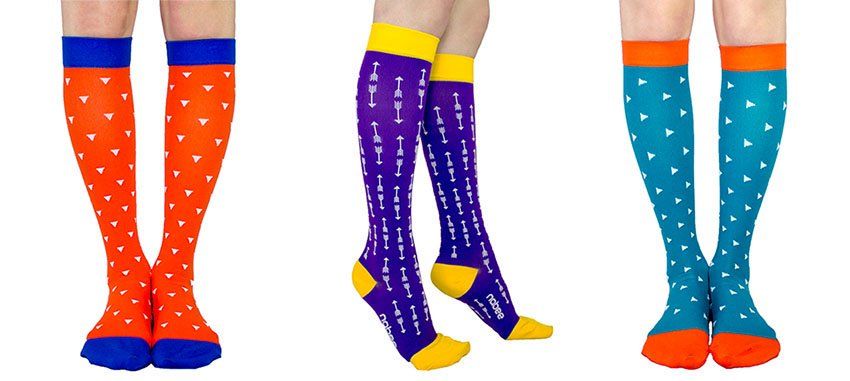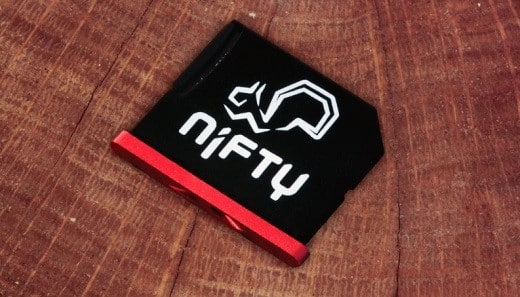Six-figure crowdfunders Ricky Choi & Phil Moldavski raised almost 400% of their Kickstarter goal with the vision to redefine our relationships with our sock drawers. Their mission was to bring colorful and premium socks to the marketplace at an affordable price, which they’ve since accomplished by actively selling Nice Laundry socks on their website.
However, as with all overnight successes, this dream took immense planning and dedication from day one. Below, we’ve included our discussion with the team, where they detail how they were able to raise $119,321 from 2,000+ backers in the span of 40 days.
They also gave us a ‘look under the hood’ of the project, sharing why they decided to launch a crowdfunding campaign, how they validated their business assumptions, and how they’ve managed to scale the project after experiencing high order volumes.
How did you come up with idea to redo men’s sock drawers?
Ricky Choi: I met [co-founder Phil Moldavski] when we both worked at Living Social, and I noticed that he was very well dressed, but every day he would wear these white athletic socks with his dark dress shoes.
It just wasn’t giving him the look that I knew he was going for. I’ve always been a sock guy. As soon as I felt like I knew Phil well enough, I suggested that he buy a pair of socks—a colorful, dressy, more refined pair—which he did. He ordered a pair online, wore them to work, got a ton of compliments, and loved how they made him feel. But when he got home, he threw them in the wash and didn’t see them again for another two weeks until they came back through the wash.
He wanted every single pair in his sock drawer to be a go-to pair of socks. So he spent weeks and hundreds and hundreds of dollars refreshing his sock drawer with high-quality, colorful, fashionable socks. It was kind of at that point that he said, “Hey, this refreshing your sock drawer is such a great experience but there’s no current solution that allows you to do it for a reasonable price.” [Thus, Nice Laundry] was born from a personal pain point.
How did you turn that into a business and why did you decide to crowdfund it?
RC: Coming from the startup world, we’re all about testing and minimum viable products. Therefore, we weren’t going to go raise $500,000 to test this unproven concept.
Our first step was to call all of our friends and family and pitch them on the idea. We asked them what was their relationship with their sock drawer. Are there some socks that they always wear first? Are there some socks that are always left over [after doing laundry]? How many socks have missing pairs? How many have holes in them, etc.
After walking them through these questions, we realized almost everyone has a terrible experience with their sock drawer. Next, we went to Macys, Nordstrom and all the bargain basements. We would just hang out by the sock displays and wait for people to come up to buy socks and kind of walk them through that same set of questions to get a little bit of objective feedback. We quickly realized that this strained sock drawer relationship was a common experience.
Then, we took out a little bit of an ad spend with Google Adwords, using keywords such as “colorful socks,” “affordable socks,” and “dress socks” and drove people to a landing page with very simple value propositions: refresh your sock drawer in a few clicks, recycle all of your old socks, affordable pricing, high quality. We were capturing a very high percentage of emails, which told us this is an idea that we could definitely communicate online. The next step was a Kickstarter campaign to see if we could convince people on a larger scale since there was relatively low risk on our part and no upfront investment except for a little bit of a budget for a video.
Who were you targeting?
RC: Our target was fresh college graduates and people starting to get serious about their career or professional track. This sense of starting fresh is something that was definitely appealing to that demographic.
The other chunk of our demographic was an older crowd. I think it’s an easy way for the Baby Boomer generation to stay hip as workplace attire is becoming more casual. Whereas they used to wear a tie to showcase their character and personality, ties are not being worn anymore on a daily basis. What better way to replace a tie than with a stylish pair of socks?!
The bulk of our customers are men. About 20% of our customers are women and half of them are gifting to significant others or friends while the other half are actually buying them for themselves.
When did you realize this campaign was going to be bigger than the anticipated $30K?
RC: On launch day. At the time, we broke the record for the most backers on opening day for a fashion Kickstarter project, acquiring nearly 200 backers. We had a steady stream of backers throughout the course of the campaign. Given the fact that we had sold almost 30,000 pairs of socks through Kickstarter to over 2,000 customers, it was at that point that we thought this could potentially scale into a real business because there’s enough demand.
Fundamentally, you can have a great product and you can have a great market, but if you don’t have a product-market fit, you don’t really have anything. And that was the biggest question. We know we can make good socks. We know people like good socks out there. But, the way we’re merchandising these socks, the price-point, the look, feel and style – is that a fit for the audience that we can easily reach online? That was the biggest unknown and I think Kickstarter did a great job of helping us answer that question.
When did you start scaling?
RC: That’s always the question, right? Toward the end of our campaign as we were getting ready to place our order with our manufacturer, we were unprepared for the sheer volume. I mean 30,000 pairs of socks, that’s a 40 foot container! We had anticipated filling all of our own orders. That’s when we realized we’re going to need to bring in some outside help for sure. That’s when we contacted Fulfillrite to be our order fulfillment partner.
We fulfilled the Kickstarter orders at the end of July and delivered them on time to the day. About a week later, we launched our website to the public and again we were a little bit unprepared because, almost unbeknownst to us, we had landed in the Wall Street Journal’s Off-Duty section as their ‘Steal of the Week.’ We were unprepared for the volume. Our phones were ringing off the hook. It’s been a trial by fire as far as how to scale. I think that’s the nature of startups—you don’t scale until you have to because resources are tight. You don’t want to over-engineer solutions for a problem that you don’t have.
How did you manage that process?
RC: It wasn’t anything that impressive that we did in order to cope with the demand. We had a chat function on our website. We created a 1-800 number and had it funneled to my co-founder’s phone. He kept getting calls while he was on the phone with customers so we funneled it to my number. Eventually we had to bring in an extra friend. Our goal was to create as many channels as possible for our customers to reach us. There were times where I would be chatting with four customers online while responding to email while also talking on the phone with customers.
Did you do anything during that period that didn’t work?
RC: It’s not so much that it didn’t work. Our goal was to hand-sign cards for our first 10,000 orders, which we did, and that quickly became very tough to continue to do. We ended up signing 20,000 cards because we ordered too many cards and we said, we have them, we might as well sign them. I’d like to think that we added that personal touch for some of the early adopters of our business.
At the beginning, you just have to a lot of things manually. We initially had a promo code for a bonus pair of socks. We then had to manually go through the orders to see if they had applied the promo code and add it to their order. Over time we’ve leveraged software to help us automate.
Do you have any tips for vetting external partners?
RC: The only vendors that we really work with are Fulfillrite for order fulfillment, our vendors overseas and our expeditors—literally the people who will freight the stuff over from overseas. We do the design, marketing, and coding in-house. But as far as external vendors—especially at the beginning when you need to be flexible—it comes down to the person. Having access and a direct line of communication is the most important thing at the beginning—it’s more important than cost. After that, it’s who is going to best fit your needs.
Have you had to cut a vendor?
RC: Knock on wood, we haven’t had to do that so far.
Have you had any major surprises—good or bad—throughout this process?
RC: Obviously there are nice surprises. Today I was out in New York City and I counted four people wearing our socks. Seeing your stuff in public is always great validation. As far as anything unexpected, we were taking things day by day, so there weren’t any huge surprises. But you think about how many socks we’re bringing in at a given time and how much inventory costs and shipping costs and it all seems like a fairly simple equation, but there’s hidden costs all over the place. Things definitely start to add up.
In a world where you’re selling a lot and you’re getting sales notifications every minute, it’s really easy to lose track of the baseline fact that you’re trying to build a business. The goal isn’t to sell a lot of socks. It’s to build a sustainable business—one that is profitable and one where, after paying everyone, you’re still profitable. And we’ve done a good job of that. It’s just been surprising that as you scale and you grow, these marginal and incremental costs keep adding up. So it’s important to stay on top of it.
How do you keep your team on the same page in understanding that?
RC: We have all sorts of dashboards and do tons of reporting. We track in real-time our revenue, visitors, shipping cost, and product cost. We have a monitor up on the wall that tracks all that kind of stuff. Every week, we do a one-hour metrics session where we go over our website traffic, conversion rate, CPAs and customer lifetime values. We also track different cohorts of customers. For example, comparing customers over time that we acquired with a certain promotion versus customers that we acquired during the same time but not through the promotion. It’s just consistently staying on top of metrics over time.
What’s next for Nice Laundry?
RC: We’re building a neat model here. As we grow and scale, whether there is a real business here is always the question. We’re focused on socks right now and figuring out that as a category. Once we feel like we’re doing a good job with socks, we may look at another category and apply the same model. But as to what that next category is, I have no idea today. In the next year we’ll probably start slowly figuring that out.
Just over a year after their Kickstarter campaign, Nice Laundry has continued to grow and has been featured in Fast Company, Mashable, The Washington Post, Wall Street Journal, Uncrate and Thrillist.
To read more about what it’s like to launch and run a successful crowdfunding campaign, be sure to check out the rest of interviews in this series LINK.
You’ve done everything by the book. Your Kickstarter campaign is almost ready to launch.
You made a great product. Built an audience. Set up a campaign page.
But how do you ship it?
We put this checklist together to help you get started. It's free.





